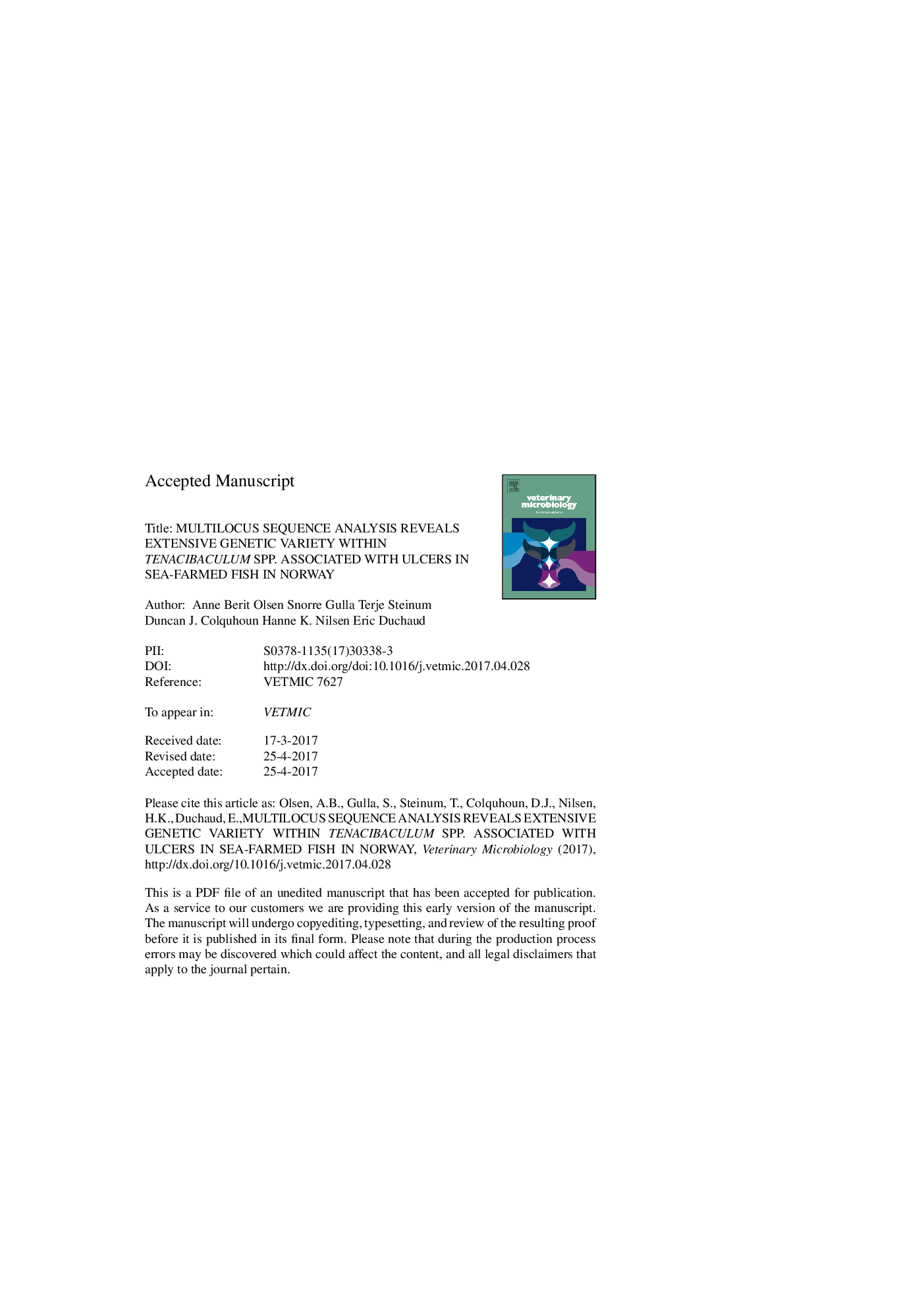| Article ID | Journal | Published Year | Pages | File Type |
|---|---|---|---|---|
| 5545385 | Veterinary Microbiology | 2017 | 26 Pages |
Abstract
Skin ulcer development in sea-reared salmonids, commonly associated with Tenacibaculum spp., is a significant fish welfare- and economical problem in Norwegian aquaculture. A collection of 89 Tenacibaculum isolates was subjected to multilocus sequence analysis (MLSA). The isolates were retrieved from outbreaks of clinical disease in farms spread along the Norwegian coast line from seven different fish species over a period of 19 years. MLSA analysis reveals considerable genetic diversity, but allows identification of four main clades. One clade encompasses isolates belonging to the species T. dicentrarchi, whereas three clades encompass bacteria that likely represent novel, as yet undescribed species. The study identified T. maritimum in lumpsucker, T. ovolyticum in halibut, and has extended the host and geographic range for T. soleae, isolated from wrasse. The overall lack of clonality and host specificity, with some indication of geographical range restriction argue for local epidemics involving multiple strains. The diversity of Tenacibaculum isolates from fish displaying ulcerative disease may complicate vaccine development.
Keywords
Related Topics
Life Sciences
Agricultural and Biological Sciences
Animal Science and Zoology
Authors
Anne Berit Olsen, Snorre Gulla, Terje Steinum, Duncan J. Colquhoun, Hanne K. Nilsen, Eric Duchaud,
